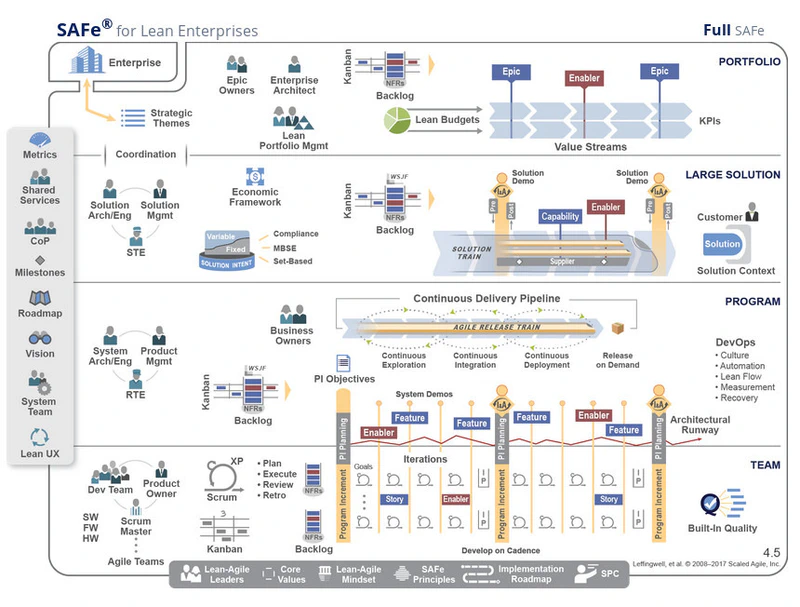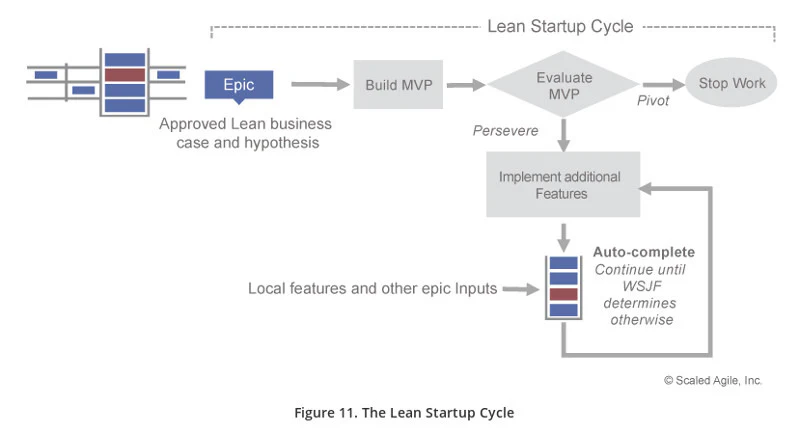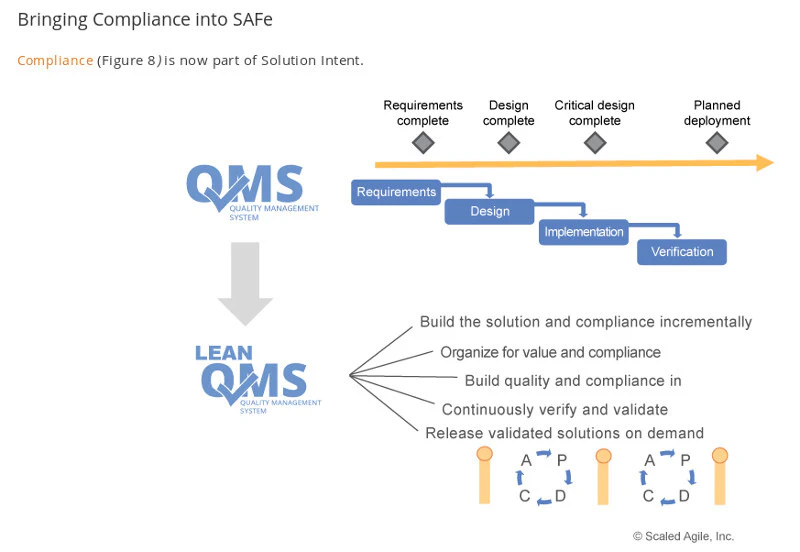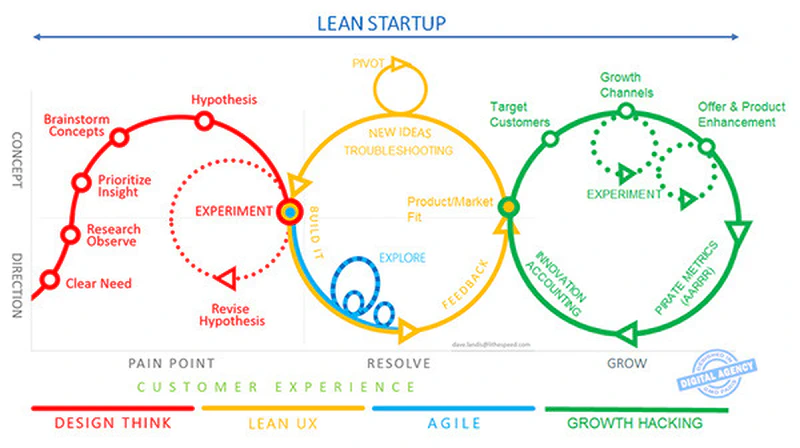Frankly, my life would be much simpler if I were a SAFe supporter. I would always have predefined answers to my clients’ questions, in all situations, in all scenarios, I would probably ask for more money without having to explain why since I have all the answers, I would have even more requests, everyone would feel safe with all these answers, I wouldn’t push anyone out of their comfort zone, I would display a false rigor that would be impressive, I would have neither doubts nor introspection regarding my coaching, I could turn off my brain at the end of the day, and even during, I would get constant feedback on the proper application of the framework (but not regarding value creation or real organizational evolution). In short, having my cake and eating it too, with peace of mind as a bonus. As for whether it would make sense for me and for the organization, that wouldn’t be my concern. SAFe takes care of everything. It’s simple, SAFe has an answer for everything. And that’s precisely the problem. SAFe denies the very reason for being of agility: evolving in a complex world.
It’s a Lie That Suits Too Many People
I naturally don’t doubt that one can derive good from SAFe, as from any other framework. Given its success, I hope that’s what will happen in fine. Moreover, SAFe’s success has reminded people of some of the important points I mentioned regarding multi-team synchronization moments, particularly giving the approach the means during these phases. Despite this, I doubt that SAFe is the right starting point; I don’t like the lack of authenticity in its message. “It’s SAFe, it’s safe” as its name implies. “We have answers for everything for everyone” as the tragic poster that made it famous implies. Once again, that’s the problem: SAFe denies the very reason for being of agility, which is knowing how to evolve in a complex world. SAFe denies the world in which it operates.
A tragic poster.

Thus I don’t want to base my organizational coaching on a lie. I don’t want to impose practices without making their meaning understood. I don’t want to make people believe that what applies in this context will apply identically in another. Perhaps later in the future it will be enough to apply practices. But today we know that it’s first and foremost a mindset, a series of principles, a way of thinking that allows evolution.
Discomfort Is Necessary
I’m used to saying that Agile puts management in discomfort—management, decision-makers, those who give orders. Before, a fixed-price contract was enough to ensure not being at fault. It was enough to manipulate an excel spreadsheet to add or subtract numbers, whether they were real dollars or people. But in the complex, systemic world, all of this falls apart for those who want to be effective. Decision-makers, those who give orders, must now support their teams in a much less predictable world. Everything that seemed under control turns out to be an illusion of control: fixed-price commitments become shams, there’s no cause and effect in playing with spreadsheet cells versus reality, things have become far too global, and an excel spreadsheet is far too reductive.
SAFe probably had to be born somewhere, emerging to appear as it appeared in the first “posters”. But this form is indeed an emanation of that context, and it’s not repeatable as is in another context, especially since it’s too precise, especially since:
People copy the most visible, obvious, and frequently least important practices – Pfeffer & Sutton, in Pavel’s slides here
Here’s what I pick up on the SAFe pages about the latest advances in version 4.5. You can reproach me for many things, particularly for focusing here essentially on form. But the container says so much about the mindset of the content that it’s chilling. The cynicism of these diagrams is chilling.
Cynical image about lean startup by SAFe

Cynical image about “compliance” by SAFe

Like some advertisements, you think “it’s too much, it won’t work,” but yes, it does.
For the same reasons I also have a bit of trouble with this thing

When you do everything, you do nothing. When there are only emergencies, there’s no more emergency. When you need to plan everything, it’s because you don’t know what you want. et cetera
SAFe’s main lie is making us believe we’re still in a Cartesian, non-systemic world. Its main lie is the detail of its answer that suggests everything can be broken down, and that everything can be answered with a simple mechanical action. For hierarchies in place, it’s a blessing; they find a lever that allows the Old World to persist while painting itself in the colors of the new. For Cartesian models in place, it’s also joyful; they know how to correlate easily without denying and thus without understanding the change in the world around them. For SAFe’s founders, it’s an economic blessing, especially since their political move was to aim high, very high. Double win: they reinforce hierarchies in place, and the high price ends up convincing them, if not the certifications.
Intellectually speaking, it’s shocking. Operationally speaking, I’m willing to believe that the state of some organizations is such that going through this brings progress (as in spiral dynamics, you have to go through the blue level before hoping to reach the green level).
I expect more from true modern leaders, that they know how to take the risk of moving forward, that they take the risk of thinking.
The Framework Not the Gesture
The main difference between Agile and Lean is as follows: Lean through constant adaptation seeks to evolve its practices, but each adaptation is standardized across the factory, the chain, the people. Standardization prevails over adaptation. Agile evolves in an even more complex world; adaptation takes priority without seeking to standardize the whole (and incidentally, this agile is gradually gaining ground on Lean, since the world is becoming more and more complex).
Thus the framework in which everyone works is important, but the freedom of gesture must be left to each entity. Example: each team must regularly show something finished, must measure its impact in the field, for example. But the way it decided to function for this is its responsibility. The form it decides to use to present it is its responsibility.
The accumulation of details and the catalog of answers in SAFe establish a totally different mindset. There’s no oxygen for adaptation, and thus no room for performance. Just the mediocrity of application through the search for compliance.
When I’m asked about SAFe, I respond using Henrik Kniberg’s testimony that I witnessed, and with a mocking tone: “I’m of the same opinion as Henrik Kniberg, SAFe is great, they use 30% of it at LEGO”. If you already decide to apply SAFe at 30%, you would circumvent this framework’s main pitfall, its obesity, its hunger for details. Could you be certified at 30% on SAFe? Unfortunately not.
Roland Gori quoting and commenting on Giorgio Agamben: “The free citizen of democratic-technological societies is a being who constantly obeys in the very gesture by which he gives a command.” To which Roland Gori adds: This shows how much we are caught in a production chain of behaviors in a system that assigns us to places that are functional places, instrumental places and that doesn’t require thinking, doesn’t even require having a state of mind.
By leaving everyone free to choose their gesture, we must be carried by meaning. I’m part of the school that thinks the framework must be clarified, not the gesture. That’s where all the real value is at stake.
Economy of Thinking
Thus we must be wary of SAFe because it wants us to economize on thinking. By having an answer for everything mechanically.
I’ll use again this video discovery of Roland Gori whose book I already discussed 5 years ago: “Thinking, like deciding, mobilizes the anxiety of the unexpected, mobilizes the anxiety of the future, it mobilizes the anxiety of freedom, it mobilizes the anxiety of decision, and deciding is renouncing, and we don’t like to renounce.”
You cannot envision a transformation without introspection even from the organization. Doing agile or being agile, it’s always the same question. I’m wary of SAFe because it will make you do, but it won’t propose that you be. I hope nonetheless that SAFe will succeed in involuntarily putting people on the road toward agile by making them do and that on the path traced by the framework they will know how to find their own way. The only one that can truly succeed: their own. And thus be agile.
SHU HA RI?
Some will invoke the SHU stage (“Do what the mentor asks you to do without question. Apply the rule, practice, and practice again.”), then you’ll know how to adapt. But SAFe is far too cannibalizing in its communication. SAFe doesn’t leave room to move to the HA stage (By doing you’ve truly understood how it worked and now you can make contextual adaptations.), as shown by the diagrams above of additions in version 4.5 for example. SAFe constantly fills the space and all the space, there’s no free space to evolve, you just have to comply. It suffocates us in its logorrhea.
SAFe, an Imposture
An impostor is one who has perfectly found the way to adapt to the other’s expectation […] Making form prevail over substance, valuing means rather than ends, trusting appearance and reputation rather than work and probity, preferring audience to merit […]. The hallmark of imposture, the ability to sell appearances. Roland Gori. The Factory of Impostors.
SAFe is an imposture if I use Gori’s words because it has perfectly identified with the other’s desire, the other being this majority of organizations that must change without wanting to, this majority of people anxious about this idea. I understand this anxiety. But by being this imposture, SAFe doesn’t tell a more important truth about the systemic world that surrounds us and doesn’t do us a service.
Remarkable video by Roland Gori (whose book I commented on in 2012) who came with surprise and happiness to comment, refine, surpass my thinking:
On impostors, on value, on measurements, factory of monsters, essential character of the useless, etc.
A Small Series on Scaling (and Self-Organization).
- Agile at scale: it’s clear as crystal, 2013
- Agile at scale: synchronization, 2017
- Agile at scale: why you should be wary of SAFe, 2017
- Agile at scale: liberation of self-organization, 2017
- Agile at scale: teams and management, 2017
- Agile at scale: growing or massifying
- Agile at scale: Podcast “Café Craft” - “Agility at scale”
And otherwise the event we’re organizing around agile at scale with Dragos Dreptate: